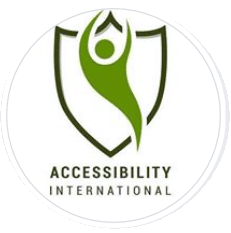We’re often asked what the secret is to our approach to accessibility and inclusion at Microsoft. The simple answer is, we manage it like a business. As with any business, it needs to be actively managed and measured to ensure it continues to grow and stay healthy. To help bring other organizations along, I’d like to dive in a bit deeper into our model in the hopes that you can take what we’ve learned adapt it for your company’s purpose and grow accessibility in a sustainable way that’s integrated into your culture.
Accessibility is a journey. Back in 2016, we realized we needed to evolve our approach to accessibility and so we set out to rebuild our company-wide accessibility program in more systematic way that allowed us to measure progress and set targets. To do this, our Accessibility Leadership Team
studied best practices in maturity models —the Carnegie Mellon Capability Model and the Level Access Digital Accessibility Maturity Model. The wisdom from these models was discussed by the Microsoft Accessibility Leadership Team who then considered the dimensions and criteria that would work for Microsoft. This led to development of the Accessibility Evolution Model (AEM) which we have been using and improving on for over four years. The use of this model has enabled us to understand year-over-year growth, by division and function, and track progress. To manage accessibility like a business.
The model defines how developed an organization is in addressing a business problem like accessibility and includes a set of structured levels that describe how well the behaviors, practices, and processes of an organization can reliably and sustainably produce desired outcomes.

The AEM is comprised of eight overarching dimensions by which we assess our accessibility journey. People & Culture, Vision, Strategy and Engagement, Investments, Standards, Training, Support & Tools, Procurement, Product Development Lifecycle, and Sales, Marketing & Communications. We realize that each organization has its own pace and starting point, and you may have your own criteria, but the starting point for building a culture of accessibility and disability inclusion is People.
At Microsoft, we approach inclusion in everything we do and consider disability as a strength. The more you focus and take this approach, the more your culture will improve and evolve. It really starts by hiring people with disabilities and empowering that talent as an integral part of your organization. The mission of Microsoft is to empower every person and every organization to achieve more. So, inclusion of people with disabilities is deeply connected to the core of our company goals. By empowering talent with disabilities, we gain expertise that enables us to build products and services that reflect the diverse needs of our global customers. Our focus on inclusive hiring programs including the Autism Hiring Program is at the core of building a long-term successful organization. Additionally, it’s important that every employee is trained on accessibility and understands why and how to be inclusive using accessibility. We created an ‘Accessibility in Action Badge’ for our employees, 90 minutes of virtual online content to shine a spotlight on how technology can empower everyone. After receiving a lot of positive feedback, we created a similar program for other employers, nonprofits, and consumers to take alongside our employees which launched in May this year. Invest your time to complete the accessibility fundamentals learning path today on Microsoft Learn and consider how similar training could benefit your organization.
The AEM has helped us to understand the maturity of our Product Development Lifecycle. As a technology company, this is imperative, but the same principles apply to every company regardless of what your ‘product’ is. This dimension focuses on how to plan, design, code, build & deploy, test, and receive feedback, to ensure requirements are built into the development lifecycle and that accessibility is a part of the normal engineering processes. While much of this is baked into our formal processes, we also are aware of the need to continue in innovation and creativity within technology. It is important to setup repeatable processes, while also providing flexibility within engineering teams, particularly in design phases. Taking a look at the five levels within the development lifecycle, we explore the reactive mode, whereby teams are learning accessibility, testing, finding and remediating bugs – completely reactive. As we grow in maturity, we begin to see the proactive activities, such as spec reviews with an inclusive lens. This reduces the reactive bug fixes, and allows us to “shift left”, which means moving the accessibility lens and actions upstream into the conceptual and design phases and most importantly listening to user needs. A great and timely example of this is accessibility features in Microsoft Teams including custom backgrounds and live captions. These features stemmed from one of our engineers in the Deaf community who saw an opportunity to improve the product which resulted in features that are now widely used for collaboration. In fact, we saw a 30x increase in captions usage from February to April this year as more and more people leveraged the feature to collaborate globally as a result of the pandemic.
Remember, there is no one-size-fits-all approach to creating a sustainable culture of accessibility. You’ll need to tailor your program to fit the dynamics of your organization to ensure it’s embedded into your DNA and most importantly, part of how you run your business. You’ll need to evolve the model as you mature and learn what factors and dimensions fuel growth. We have a long way to go on our journey but our hope is that by sharing more about our journey and how the Microsoft AEM has helped us mature accessibility at Microsoft, it provides you with a guide and operational model to learn from, and accelerate your journey no matter your starting point.
There is so much more that we want to share that can’t be covered in the span of this blog so we encourage you to check out the resources we’ve made available on Microsoft.com/Accessibility.




